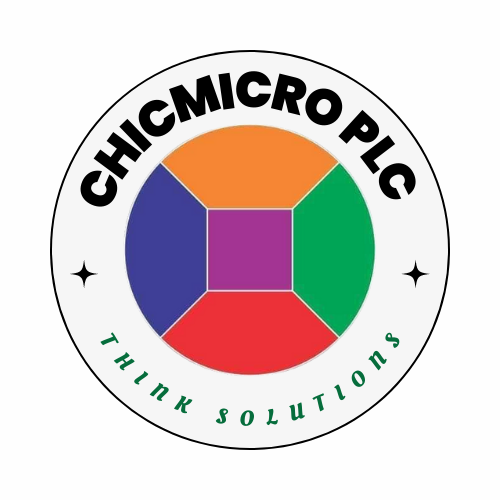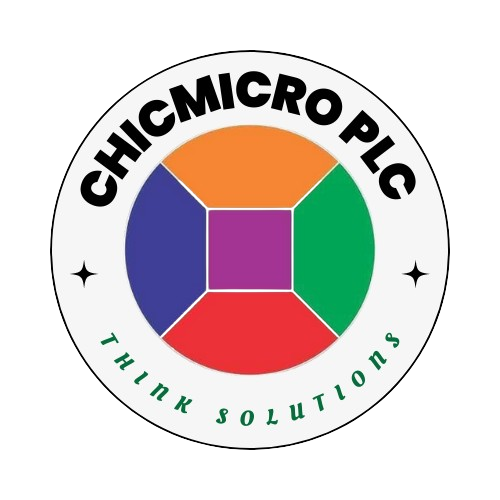Introduction to U.S. Immigration
U.S. immigration represents a complex system through which foreign nationals can seek entry, stay, or adjust their status in the United States. As we look toward 2025, the landscape of immigration is poised for notable changes that will impact the prospects of individuals seeking to relocate to America. Understanding the nuances of U.S. immigration is essential, as it involves navigating various pathways, each with its own requirements and processes. This overview aims to elucidate these aspects and highlight the significance of adhering to legal stipulations.
Historically, U.S. immigration has offered opportunities for individuals across the globe, allowing them to pursue employment, education, or family reunification. In the context of 2025, it is vital to recognize that immigration policies have the potential to evolve, responding to domestic and global socio-economic dynamics. This evolution is underscored by the ongoing discussions surrounding border security, visa requirements, and humanitarian considerations, all of which shape the immigration framework.
Various pathways exist for aspiring immigrants, ranging from employment-based visas to family-sponsored categories. These immigration avenues provide a structured method for achieving lawful status in the U.S. Each pathway serves a distinct demographic and requires a thorough understanding of qualifications, documentation, and application processes. Furthermore, the importance of complying with legal requirements cannot be overstated. Failing to adhere to established guidelines can result in application denials, delays, or even removal from the United States.
In preparing for the immigration process, individuals must remain informed about current laws and policies, as they are subject to change. The journey of immigration is not merely about crossing borders; it is about setting the groundwork for potential citizenship and contributing to the rich tapestry of American society. As we progress to 2025, prospective immigrants must equip themselves with knowledge and insights, ensuring that they embark on their journey with a clear understanding of the immigration landscape.
Understanding Different Immigration Pathways
The United States offers various immigration pathways, each designed to accommodate different circumstances and needs of potential immigrants. Understanding these pathways is crucial for individuals considering relocation to the U.S. in 2025.
One of the most common forms of immigration is family-sponsored immigration. This pathway allows U.S. citizens and lawful permanent residents to sponsor their relatives for immigration. Eligible family members typically include spouses, children, parents, and siblings. The application process involves specific requirements, such as demonstrating the authenticity of the familial relationship and meeting minimum income thresholds to ensure that the sponsoring individual can support their relatives financially. Family-sponsored pathways often provide a more straightforward route to obtaining lawful permanent residency.
Employment-based immigration is another significant avenue for those seeking to live and work in the United States. This pathway consists of several categories based on skills, qualifications, and employment offers. For example, individuals with extraordinary abilities in fields such as science or arts may qualify for an EB-1 visa, while those seeking permanent positions would generally apply through employer sponsorship under EB-2 or EB-3 categories. It’s important for applicants to understand that employment-based pathways often require labor certification and other documentation to prove that the U.S. job market is unable to fill the position with qualified domestic workers.
For individuals facing persecution or danger in their home countries, refugee status may provide a vital pathway to safety in the U.S. This process is designed for those unable or unwilling to return to their country due to fear of persecution based on race, religion, nationality, political opinion, or membership in a particular social group. Applicants must demonstrate that they meet the definition of a refugee, which can be a complex task involving detailed interviews and documentation.
Lastly, the Diversity Visa Lottery is a unique program aimed at diversifying the immigrant population in the U.S. by providing visas to individuals from countries with low rates of immigration to the United States. Each year, a limited number of visas are available through this lottery system, and applicants must meet certain eligibility criteria to participate. Understanding these diverse immigration pathways, including their requirements and benefits, is essential for anyone looking to navigate the immigration process effectively.
Preparing Your Immigration Application
Embarking on the journey to immigrate to the United States in 2025 necessitates meticulous preparation of your immigration application. The success of your application largely hinges on the quality and completeness of the documentation that you submit. It is imperative to begin by gathering all necessary documents well in advance, as missing paperwork can lead to delays or even denials. Common documents typically required include proof of identity, financial statements, medical examinations, and any supporting evidence pertinent to your immigration category.
Understanding the various forms associated with the immigration process is equally crucial. Each type of visa or immigration benefit has its specific forms that must be accurately completed and submitted. The United States Citizenship and Immigration Services (USCIS) website offers detailed guidelines and downloadable forms that applicants can utilize. Familiarizing yourself with these forms, as well as the instructions for completing them, can prevent errors that might otherwise jeopardize your chances for approval.
Additionally, applicants must be mindful of the fees associated with filing their immigration application. These fees can vary significantly depending on the visa category, so it is essential to review the applicable fees beforehand. Payment methods and fee structures are typically detailed on the USCIS website, and it is advantageous to arrange for the necessary funds early in the process to avoid any delays.
Keep in mind that potential waiting times for processing applications may vary based on the visa type and the applicant’s circumstances. It is prudent to regularly check the status of your case through the USCIS online portal and to plan for potential delays in your timeline. Organizing your immigration application thoroughly and staying informed about the requirements will significantly enhance the likelihood of a successful application.
Navigating the Visa Application Process
Embarking on the journey to immigrate to the United States requires a comprehensive understanding of the visa application process. This process begins with selecting the appropriate visa category, which will depend on factors such as employment status, family connections, or investment intentions. Once you have identified the suitable visa type, the next critical step is to complete the online application submission through the U.S. Citizenship and Immigration Services (USCIS) website or the Department of State’s Consular Electronic Application Center.
Following the online application submission, applicants are typically required to pay a visa application fee. It is important to keep documentation of the payment for your records. Subsequently, you will need to schedule a visa interview at a designated U.S. embassy or consulate. Preparing for this interview is crucial, as it is a significant part of the visa application process. Applicants should familiarize themselves with the relevant documentation needed for the interview, including passports, photos, and any supporting documents that reinforce their visa application.
During the visa interview, the consular officer will ask various questions to assess your eligibility. Common interview questions may include inquiries about your purpose of travel, your financial stability, your ties to your home country, and your familiarity with U.S. laws. It is advisable to respond openly and confidently to these questions while providing concise and truthful answers. Preparing for these queries can significantly enhance your chances of a favorable outcome.
Applicants should also ensure they bring all necessary documents to the interview, as lack of crucial information can lead to delays or denials. Overall, navigating the visa application process necessitates careful preparation, attention to detail, and a professional demeanor during interviews, paving the way for successful immigration to the United States in 2025.
Understanding Immigration Interviews
Immigration interviews are a crucial step in the process of applying for a visa or permanent residency in the United States. Understanding the interview process can significantly reduce anxiety for applicants. To prepare effectively, one should start by familiarizing themselves with the types of interviews they may face, as well as the format and common questions that may arise.
Preparation is key in this process. Applicants should review their application thoroughly, ensuring they can speak confidently about all the responses submitted. It can be helpful to practice answering potential questions with someone in a similar situation or even a professional who specializes in immigration. Common topics covered during the interview may include an applicant’s background, employment history, relationships, and reasons for immigration. Clarity and honesty in responses are paramount.
Communication with immigration officers is equally important. Maintaining a respectful and calm demeanor can foster a positive interaction. If an applicant does not understand a question, it is advisable to politely ask for clarification rather than guessing. This demonstrates respect for the process and aids in ensuring accurate communication.
Additionally, having the right documents on hand can streamline the interview process. Essential documents may include identification, proof of legal status, financial records, and any supporting evidence that bolsters the application. It is advisable to create a checklist to ensure no critical documents are overlooked. Organizing them neatly can also provide an edge in presenting a professional demeanor during the interview.
By taking these steps, applicants can approach immigration interviews with confidence, ultimately increasing their chances of a favorable outcome. Familiarity with the process, effective communication, and proper documentation are integral components of a successful interview experience.
Dealing with Immigration Challenges and Denials
The immigration process in the United States can be fraught with numerous challenges, leading to potential application denials. Understanding these issues is crucial for applicants looking to navigate the complexities of the immigration system. Common reasons for denial include incomplete paperwork, failure to meet eligibility requirements, or issues related to criminal records. Each of these challenges can significantly affect the likelihood of a successful application.
To address an application denial, the first step is to carefully review the reasons provided by the immigration authorities. These reasons will typically be outlined in the denial notice and may point to specific documents or criteria that were lacking. If the denial is based on incomplete forms or insufficient evidence, applicants can address these issues by gathering the necessary information and submitting a properly completed application. It is often advisable to seek the assistance of an immigration attorney who can provide valuable guidance on how best to strengthen a case.
If an application’s denial stems from more complex issues, such as past immigration violations or criminal history, it may be necessary to explore waiver options or legal remedies. In some cases, applicants may have the right to appeal the decision. The appeal process allows individuals to contest the denial and present any new evidence that may support their case. It’s important to adhere strictly to deadlines during the appeal process and ensure that all required documentation is submitted promptly.
Additionally, if an appeal is unsuccessful, applicants may consider reapplication as another avenue. Reapplying may provide the opportunity to rectify previous mistakes and demonstrate changed circumstances. Each situation is unique, and taking proactive steps can significantly improve the chances of a successful immigration outcome. As navigating through the immigration process can be daunting, persistence and thorough preparation are essential for overcoming challenges and achieving immigration goals.
Post-Arrival Steps in the U.S.
Upon arrival in the United States, it is crucial for new immigrants to navigate several essential steps to ensure a smooth transition and successful acclimatization. One of the first and most significant actions is obtaining a Social Security Number (SSN). This number is imperative as it is required for employment, taxation, and accessing various public services. Immigrants should apply for an SSN at their local Social Security Administration office, providing the necessary documentation, which typically includes an immigration status verification such as Form I-94, a passport, and any work authorization, if applicable.
Understanding the healthcare system in the United States is another vital step for new residents. The U.S. does not have a universal healthcare system; therefore, it is essential to explore available health insurance options. Immigrants may be eligible for government programs or choose to purchase private insurance. Familiarizing oneself with local healthcare providers, including hospitals and clinics, can significantly ease the transition. It is advisable to schedule a comprehensive check-up, as this will help establish a baseline of health and identify any necessary ongoing care.
Housing and employment are equally important considerations following arrival. New immigrants should research their preferred cities or neighborhoods to find suitable housing, taking into account proximity to work opportunities, schools, and public transportation. Various online platforms can assist in housing searches, and local community organizations may offer resources for immigrants in need of support. In terms of employment, leveraging connections within professional networks and community groups can aid in job searches. Utilizing job boards and understanding local job market trends will improve employment prospects. By taking these critical steps, immigrants can foster a sense of community integration and enhance their overall experience in the United States.
Path to Permanent Residency (Green Card)
Obtaining permanent residency in the United States, commonly referred to as obtaining a Green Card, is a significant goal for many individuals seeking to live and work in the country. The pathway to achieving this status involves a series of eligibility requirements, application procedures, and adherence to specific regulations set forth by the U.S. Citizenship and Immigration Services (USCIS).
To begin the process, applicants must first determine which category they fall under for eligibility. Common pathways include family sponsorship, employment-based petitions, refugee or asylum status, and diversity lottery programs. Each category has its own specific requirements; for instance, family-based applicants must provide proof of a qualifying relationship with a U.S. citizen or lawful permanent resident.
The application process typically starts with filing the appropriate forms, most notably Form I-485, the application to register permanent residence or adjust status. Applicants may also need to secure an immigrant petition, such as Form I-130 for family sponsorship or Form I-140 for employment-based applications. It is essential to be aware that the overall processing time for a Green Card can vary significantly, ranging from several months to several years, depending on the applicant’s situation and the category under which they are applying.
Maintaining permanent residency status involves understanding the conditions that come with a Green Card. It is crucial for cardholders to reside in the United States for a significant portion of the year, avoid prolonged absences that could lead to abandonment of status, and ensure any required renewals or conditions are met. This status not only allows individuals to live and work in the U.S. without restrictions but also provides access to social benefits, the ability to travel and return to the U.S. more easily, and a pathway to U.S. citizenship after fulfilling certain residency requirements.
Becoming a U.S. Citizen
Becoming a U.S. citizen is a pivotal step in the journey of many immigrants, as it offers the opportunity for full participation in American society. The process of naturalization is defined by specific requirements that applicants must meet, as well as a formal application procedure aimed at evaluating their eligibility. To apply for citizenship, you must typically be at least 18 years old and a lawful permanent resident (green card holder) for a minimum of five years, or three years if married to a U.S. citizen. In addition, applicants should demonstrate good moral character, an understanding of the English language, and knowledge of U.S. history and government.
The application process begins with the completion of Form N-400, the Application for Naturalization. This form requires detailed personal information, a record of your residency, and any potential criminal history. After submitting your application, you will attend a biometric appointment for fingerprinting, followed by an interview with a U.S. Citizenship and Immigration Services (USCIS) officer. During this interview, you will answer questions regarding your application and take the civics and English tests.
Once you successfully complete the interview and tests, the next step is to take the Oath of Allegiance, which is the final act of naturalization. By taking this oath, you pledge allegiance to the United States and agree to uphold the Constitution and laws. The benefits of U.S. citizenship are substantial, encompassing the right to vote, eligibility for federal employment, and access to a U.S. passport. However, with these privileges come responsibilities, such as paying taxes, serving on juries, and participating in civic duties. Therefore, understanding both the advantages and obligations is essential for anyone considering this significant commitment to their new home.


